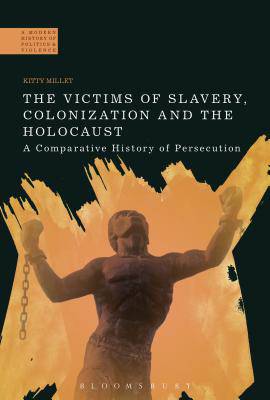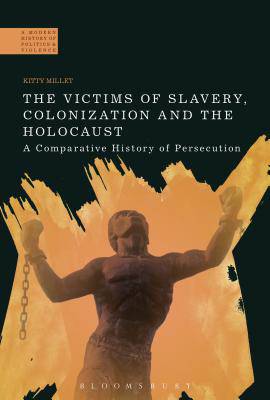
- Afhalen na 1 uur in een winkel met voorraad
- Gratis thuislevering in België vanaf € 30
- Ruim aanbod met 7 miljoen producten
- Afhalen na 1 uur in een winkel met voorraad
- Gratis thuislevering in België vanaf € 30
- Ruim aanbod met 7 miljoen producten
Zoeken
The Victims of Slavery, Colonization and the Holocaust
A Comparative History of Persecution
Kitty Millet
€ 220,45
+ 440 punten
Uitvoering
Omschrijving
This book provides a sophisticated investigation into the experience of being exterminated, as felt by victims of the Holocaust, and compares and contrasts this analysis with the experiences of people who have been colonized or enslaved. Using numerous victim accounts and a wide range of primary sources, the book moves away from the 'continuity thesis', with its insistence on colonial intent as the reason for victimization in relation to other historical examples of mass political violence, to look at the victim experience on its own terms. By affording each constituent case study its own distinctive aspects, The Victims of Slavery, Colonization and the Holocaust allows for a more enriching comparison of victim experience to be made that respects each group of victims in their uniqueness. It is an important, innovative volume for all students of the Holocaust, genocide and the history of mass political violence.
Specificaties
Betrokkenen
- Auteur(s):
- Uitgeverij:
Inhoud
- Aantal bladzijden:
- 280
- Taal:
- Engels
- Reeks:
Eigenschappen
- Productcode (EAN):
- 9781472508263
- Verschijningsdatum:
- 9/03/2017
- Uitvoering:
- Hardcover
- Formaat:
- Genaaid
- Afmetingen:
- 155 mm x 236 mm
- Gewicht:
- 544 g

Alleen bij Standaard Boekhandel
+ 440 punten op je klantenkaart van Standaard Boekhandel
Beoordelingen
We publiceren alleen reviews die voldoen aan de voorwaarden voor reviews. Bekijk onze voorwaarden voor reviews.











